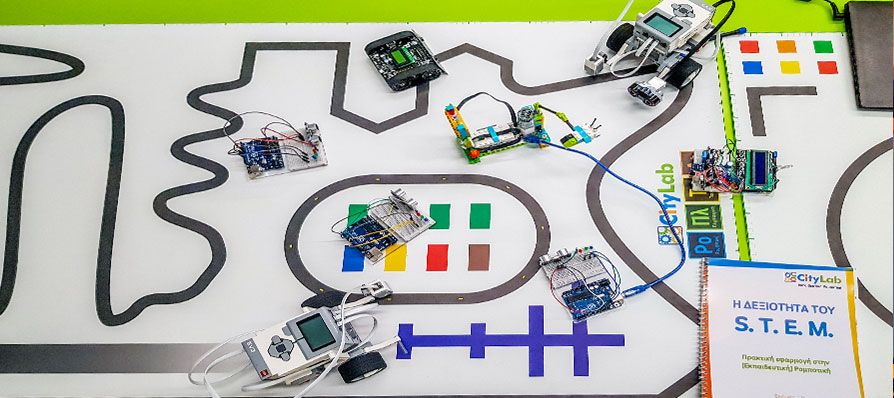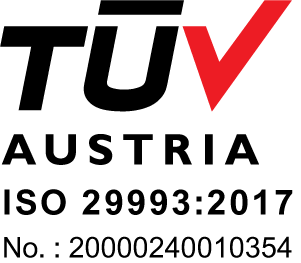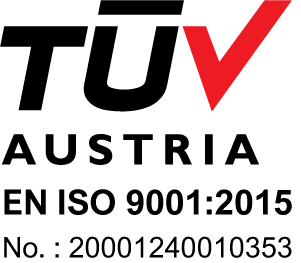Labs by age

The topics and images we see in our workshops are listed. Some we see from the first day while others we build slowly.
In all our labs participate happy children who collaborate and create hardware and software constructions that "they did not know they could".
In the process, they "understood exactly how the 4x4 drive works", the crane, the PacMan, the differential, the Archimedes screw, the speeds and the gears on their bike (... and in the car), the elevator, the Clark, the conversion of energy from one form to another, Space Invaders, artificial intelligence algorithms, sensors, software development and software engineering, financial engineering, etc.
In addition, all of the above can (and want to) present them to third parties with creative confrontation, from day one!
See our annual schedule here.
By age and subject, our workshops are as follows:
5-7 years: Engineering
George, Ioanna and Panagiotis build a mechanical seesaw, which is not symmetrical but moves according to the weight of the children to balance. Notice that…
Work environment and indicative content
Specific engineering tools and kits help our young students to transform the abstract concepts and problems of Engineering and Mathematics into a tangible process of understanding and solving them.
Working in an already familiar and fun environment, children feel comfortable and motivated to face the "challenge" of Mathematics and Engineering in a collaborative way. (Lego Education Early Simple Machines, Lego Education More to Math).
We understand simple mathematical and geometric concepts, while exploring the operation of simple and complex mechanisms and everyday machines such as gears, wheels, axles, levers and pulleys. We make big and real machines, such as catapult, crane, carousel, etc. and we experiment with settings in their parameters! How do we make our crane stronger, our carousel faster and our catapult more durable? Children CREATE their constructions and then improve them. The emphasis is on Mechanical Engineering and little ones love to build the same complex machines by combining simple mechanisms and components.
We deal with concepts such as:
- Problem solving: problem understanding and the use of appropriate strategies.
- Logic Development: Either with abstract or quantitative reasoning, children use arguments and deal constructively with the thinking of their classmates.
- Persistence and Accuracy: children develop perseverance in the perception and solution of mathematical and mechanical problems, with special care from the instructors for accuracy throughout the process.
- Continuous observation, exploration and improvement of simple machines and components.
7-18 years old: Robotics
(7-9 years old) Despina, Harry and Jason are getting ready to test their catapult and, in a sudden movement, their belt is cut! Without stress, they disconnect the motion sensor, remove two gears and instead of a pulley…
(9-12 years old) Chara, Elias and Tasos, adjust their robot, which follows a line, to reduce speed in sharp turns, so that when he solves the maze he comes out quickly. But at the right angle…
(12-14 years old) Giannis, Maria and Dimitris are getting ready to try their own Robot, against the Robot of Efi, Nikos and George. After the "easy" trilogy, now they will compete in Score4 and their algorithm with binary trees changes to bitboards where…
(14-18 years old) Elena, Nikos and Christos, adjust the latest conditions in the program for the drone that "learns" the conditions around it and adjusts the flight parameters - but a fault in the GPS will make them improve the program so that…
7-12 years: Working environment and indicative content of Robotics
Manufacture of simple electromechanical models. Connect to a computer. Programming in a graphical environment. Use of robotics for STEM.
Students build robots and develop software, designing, controlling, and modifying commands from a variety of real robotic behaviors ( Lego Education WeDo, Lego Education WeDo2, Scratch ).
Design and implementation of the model. Exchange ideas to find alternatives. Programming and using the computer to implement a working model. Use a program to gather information. System feedback to adjust the final result. Working with simple machines, sensors, gears, transmission. Measurement of time and distance, addition, subtraction, multiplication, division, randomness and use of variables. Experimentation, analysis, composition. Description and journalistic writing, narration, explanation and interpretation to third parties of what we made and how.
10+ years old: Working environment and indicative content of Robotics
Create a real robot that has sensors of rotation, sound, touch, light and ultrasound. The robot can be programmed to perform a number of tasks, such as moving in a specific way, picking up objects, playing ball or collecting data from space and feeding it to the computer for further processing. Using robotics for STEM: Students design and build robots and then develop software, designing, controlling, and modifying command sequences from a variety of real robotic "behaviors." They collect data from sensors and analyze them, to improve the behavior of the robot and have the desired result ( Lego Education Spike Prime, Lego Education Mindstorms EV3, LabView, Microsoft Small Basic ).
Design and build programmable robots using motors, sensors, gears, wheels and other building materials. Understanding and implementation of 3D models from 2D drawings. Build, test and revise design to optimize robot operation. Gaining practical experience, using mathematical concepts such as estimating and measuring distance, time and speed. Understanding concepts such as ingenuity and experimentation to find a solution. Planning and managing the actions required to complete a project. Construction and exploration of Machines through real life. Exploration of motors powered by motors. Exploration of renewable energy sources. Continuous experiments and use of relevant measurements and data analysis to describe and explain the results.
Knowledge -> Understanding -> Improvement -> Presentation!
8+ years old: Computer Science (Algorithms, Programming)
Introduction to programming (and Computer Science) - teaches algorithmic thinking and problem solving methodology.
(8+ years old) language SCRATCH .
(12+ years old) C language , Python, Mobile (MIT App Inventor), UNITY environment (AR / VR)
With these languages we can go deeper into how computers and their programs "work", while at the same time we are ideally prepared for efficient and proper programming in any other language and / or programming environment.
The theme of the programs we build is also from our daily life!
In programming workshops our goal is to develop critical thinking and solve original (and real!) Problems with an algorithmic approach in accordance with the principles of Computer Science. Computational thinking, learning the structure of each language, writing and finally "coding" is a creative, enjoyable and natural consequence of mastering the previous skills. See examples of our children's works on our blog (in greek) here .
SCRATCH: Children create, programming in a graphical programming environment. With an algorithmic way of thinking, they combine mathematics, geometry, computational ideas, algebra, arithmetic but also object oriented and event driven programming principles. When creating a space invaders, pac man, tic-tac-toe, car simulator or maze solving program, children come into contact with all the skills, goals and learning principles of CityLab.
PYTHON: Python is an extremely flexible, object-oriented programming language, and is increasingly "preferred" for use in security systems, networking, Internet of Things and other business environments, but also for learning programming when entering Computer Science. The topics range from programming principles to language syntax, and from object oriented programming techniques to the construction of business programs.
In Python workshops for children we work with a specific methodology, beyond copying ready-made code. Our teaching method has been successfully applied in our programs since 2014 and we have tangible examples of its success. Children create and understand it themselves .
In the adult Python workshops we will further delve into topics and language use for Web Development, Business Analytics, Cyber Security, Data Science, Statistics, Machine Learning and Deep Learning. All of us, in our work, have needs for data processing, problem solving and presentation of our conclusions in "actionable reports and dashboards". Spreadsheets are obsolete and whatever report "we see and admire" is made with similar methods. This is what we teach!
C: With the C language we learn the basics of Computer Science and build the tools we will need. For example, number sorting, word finding in text and other algorithms are implemented from the beginning by us without resorting to ready-made libraries. Students naturally come closer to the structure of the computer and microprocessors (eg Arduino programming). Having learned programming in C, all the following languages or programming environments that one will need in one's career "come easily".
MIT App Inventor: In this programming environment we learn to create fully functional applications for mobile phones and tablets. Children realize that they can create their own applications, after working normally "like adults" (program design on paper, flow algorithm, requested functionality, input-process-output, user interface, etc.). Excellent environment with spectacular results in the algorithmic way of thinking but also in the user interface design.
AR / VR: Augmented Reality Virtual Reality. With more and more powerful hardware and software available in everyday consumer devices, the needs for creating applications in this field increase, "helping" areas such as Gaming, Architecture, Educational environments, simulations in a variety of real jobs, etc. Children are preparing for the new reality, today, as creators of these tools and not as their users.
12+ years old: Electronics (Arduino)
The Arduino is a "single electronic platform" of processors, controllers, sensors and programming with which we make autonomous electromechanical constructions. With the sensors, the platform "understands" what is happening around it (movement, temperature, sound…) and this, turns it into a direction for something (robot movement, light, motor,…) through programming. This functionality is found exactly the same in everyday objects around us (microwaves, air-conditions, washing machines, alarms, etc.) as in all real Robots. Children, when programming in Arduino, come as close as possible to "Real World Robotics" .
The areas that children start with are Programming and Computer Science (controllers and sensors need to be programmed!). They continue with Technology and Electronics (what circuit I will make, what sensors I will use and what components I will combine) and they will complete with Robotics and Engineering (they combine all the previous ones and build autonomous Robots). The options and accessories are practically unlimited (as in the real industry) and that is why children's imagination and creativity are launched, along with their knowledge of engineering, electronics and programming (...and this does not happen often). They will have to choose (for example when making a stand-alone car) from virtually infinite options and combinations of materials and technologies, what wheels to use, what motor, what chassis,what sensors, plastic or iron parts, programming language…
Then, and only then, that is, when they will be called upon to make these choices themselves, will our children realize that this is exactly how the electromechanical world around us is made (and they themselves will want to participate in it)!
12+ years old: Finances
Finances for kids with great and modern themes - see more (in greek) here!








